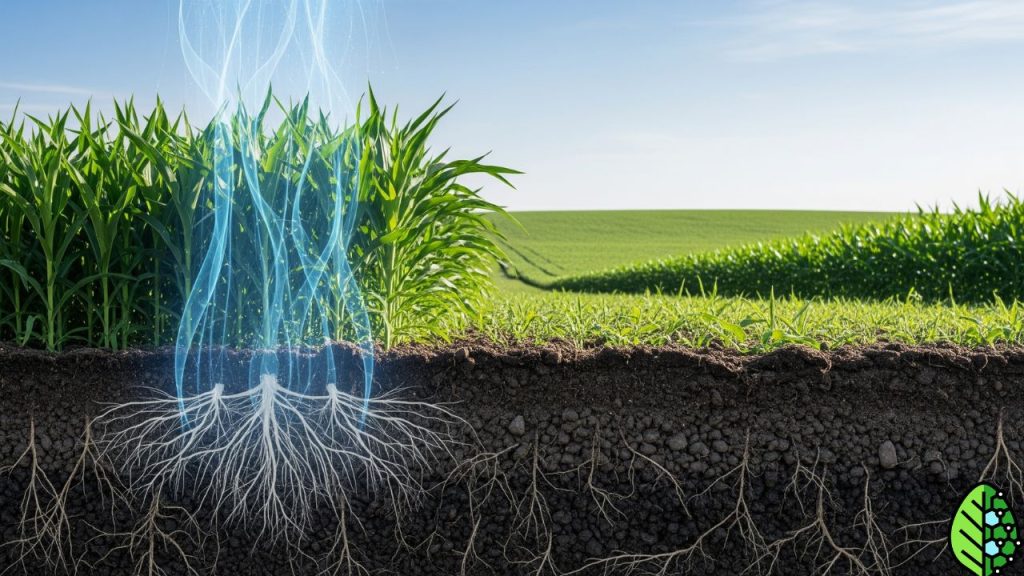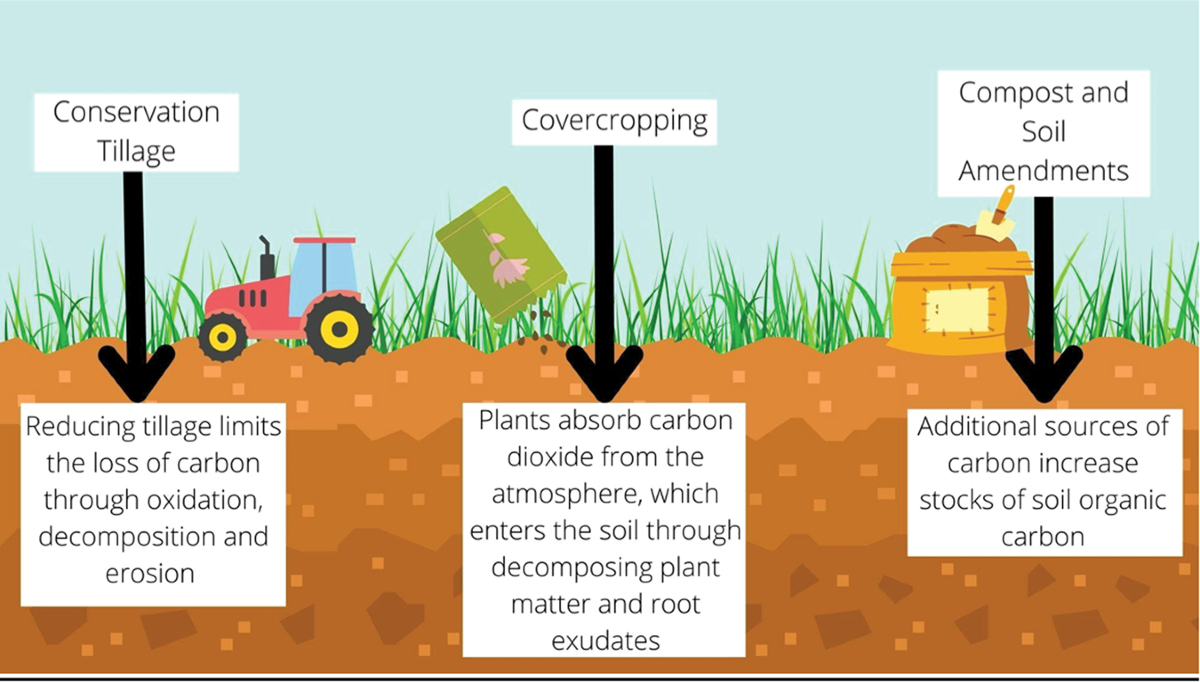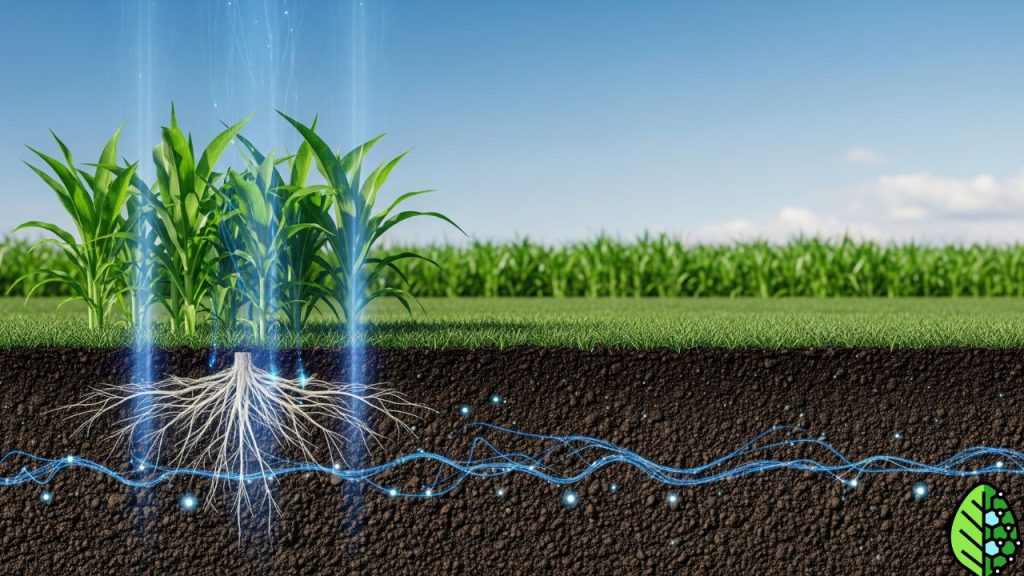Imagine a world where the air you breathe is cleaner, your food is healthier, and the planet is thriving. This isn’t a distant dream but a tangible reality that agriculture can help achieve.
At the heart of this vision is carbon sequestration, a process that captures and stores carbon dioxide from the atmosphere. You may wonder why this matters to you. Well, carbon sequestration in agriculture holds the power to transform our environment, improve soil health, and even combat climate change.
As you delve deeper into this article, you’ll discover how these practices not only benefit the planet but can also enhance the quality of your everyday life. Keep reading to uncover the vital role you play in this global effort and how you can support a sustainable future.

Carbon Sequestration Basics
Carbon sequestration in agriculture captures atmospheric carbon dioxide and stores it in soil. This process enhances soil health, increases crop yield, and reduces greenhouse gases. Sustainable farming practices like cover cropping and reduced tillage are essential for effective carbon sequestration.
Understanding carbon sequestration in agriculture can seem overwhelming, but it’s a crucial part of tackling climate change. It refers to the process of capturing and storing atmospheric carbon dioxide. This practice can significantly benefit the environment and improve soil health. But what exactly does carbon sequestration involve, and how can it be applied practically in agriculture? Let’s dive into the basics.
What Is Carbon Sequestration?
Carbon sequestration is the process of capturing carbon dioxide from the atmosphere and storing it in the soil, plants, or other materials. This is nature’s way of balancing the carbon cycle and reducing the amount of CO2 in the air. In agriculture, practices like no-till farming, cover cropping, and agroforestry help increase the amount of carbon stored in the soil.
How Does It Work?
Plants naturally absorb carbon dioxide from the atmosphere through photosynthesis. They convert this CO2 into carbon compounds, which become part of the plant’s structure. When these plants die and decompose, the carbon is transferred to the soil. By using sustainable farming practices, you can enhance this natural cycle, leading to greater carbon storage.
Benefits Of Carbon Sequestration In Agriculture
Storing carbon in the soil not only reduces greenhouse gases but also improves soil quality. Healthier soil leads to better crop yields and more resilient farming systems. Moreover, this process can enhance water retention and reduce erosion, creating a more sustainable agricultural environment.
Practical Steps For Farmers
As a farmer, you can adopt practices such as rotating crops, reducing tillage, and planting cover crops to boost carbon sequestration. These methods not only store carbon but can also improve your farm’s productivity. Have you ever tried planting cover crops in the off-season? It not only keeps your soil healthy but also traps more carbon, benefiting both your farm and the planet.
Challenges And Considerations
While carbon sequestration is beneficial, it’s not without challenges. It requires a change in traditional farming practices and sometimes an upfront investment. You might wonder, is it worth the effort? Consider the long-term benefits to your land and our planet. The shift to sustainable practices might be tough, but the positive impact on climate change makes it a worthy endeavor.
Engaging in carbon sequestration isn’t just about combatting climate change; it’s about creating a more sustainable future for agriculture. By understanding the basics and taking practical steps, you can contribute to a healthier planet while reaping benefits for your farm. Are you ready to make a change and explore the potential of carbon sequestration in agriculture?
Benefits For Soil Health
Carbon sequestration in agriculture has a powerful impact on soil health. It is a process where carbon dioxide is captured and stored in the soil. This process improves soil structure, boosts fertility, and supports sustainable farming. Farmers and gardeners are increasingly realizing the importance of carbon sequestration for soil health.

Improved Soil Structure
Carbon sequestration enhances the soil’s physical structure. It increases the soil’s ability to retain water and nutrients. This means plants have better access to essential resources. Healthy soil structure reduces erosion risks. It also improves root growth, leading to stronger plants.
Enhanced Fertility
Storing carbon in the soil boosts its fertility. Organic matter decomposition enriches the soil with essential nutrients. This process supports plant growth and increases crop yields. Farmers notice healthier plants and better harvests. Fertile soil is less dependent on chemical fertilizers.
Sustainable Farming Practices
Carbon sequestration encourages sustainable farming methods. Practices such as crop rotation and cover cropping are promoted. These methods improve soil health and reduce carbon emissions. Sustainable farming protects the environment and conserves resources for future generations.
Increased Biodiversity
Healthy soil supports diverse life forms. Carbon-rich soil attracts beneficial microbes and insects. These organisms play key roles in nutrient cycling and pest control. Biodiversity in the soil leads to resilient ecosystems. It helps farmers achieve balanced and productive farms.
Role In Climate Mitigation
Carbon sequestration in agriculture helps reduce greenhouse gases by storing carbon in soil and plants. This method enhances soil health and productivity, contributing to climate mitigation efforts. Through better land management practices, farmers can play a crucial role in tackling climate change.

The role of carbon sequestration in agriculture is pivotal for climate mitigation. As climate change becomes an ever-pressing issue, innovative solutions are necessary to reduce atmospheric carbon dioxide levels. Agriculture offers a unique opportunity to store carbon in soil and plants, serving as a natural sink. But how does this process contribute to climate mitigation, and what steps can you take to support it?
The Science Behind Carbon Sequestration
Carbon sequestration in agriculture involves capturing atmospheric carbon dioxide and storing it in the soil and plant biomass. This natural process helps reduce the overall carbon footprint. By enhancing the soil’s carbon content, farmers not only help the environment but also improve soil fertility and crop yields.
Reducing Greenhouse Gas Emissions
Agricultural practices like no-till farming, cover cropping, and agroforestry can significantly reduce greenhouse gas emissions. These methods trap carbon in the soil, preventing it from escaping back into the atmosphere. By adopting these practices, you contribute to a global effort to combat climate change.
Enhancing Soil Health
Healthy soil is rich in organic carbon, which improves its structure and fertility. When you focus on carbon sequestration, you enhance soil health, leading to more productive and resilient crops. This not only boosts your farm’s productivity but also ensures long-term sustainability.
Economic Benefits
Investing in carbon sequestration can lead to financial rewards. Various programs offer incentives to farmers who adopt carbon-friendly practices. Consider the potential for increased crop yields and reduced costs on fertilizers and pesticides when you engage in these sustainable practices.
Community Impact
Your efforts in carbon sequestration can inspire your community to take similar actions. By sharing knowledge and practices with neighbors, you contribute to a larger movement. Together, communities can create a significant impact on reducing carbon levels.
Challenges And Opportunities
While carbon sequestration presents numerous benefits, challenges like initial costs and lack of awareness exist. However, these can be overcome with education and support from agricultural organizations. Are you ready to explore these opportunities for a better future?
Engaging in carbon sequestration in agriculture not only aids in climate mitigation but also brings numerous benefits to your land and community. How will you contribute to this vital cause?
Conclusion
Carbon sequestration in agriculture holds significant importance. It reduces greenhouse gases. It enhances soil health. Farmers can benefit. Healthier soil boosts crop yields. It leads to sustainable farming practices. Communities gain from better air quality. Soil stores carbon effectively. This process supports climate change mitigation.
Agriculture plays a vital role. It contributes positively to the environment. Every effort counts. Farmers, researchers, and governments should collaborate. Together, they can tackle global warming. Action today secures a better tomorrow. Sustainable farming is the future. Let’s embrace it.



